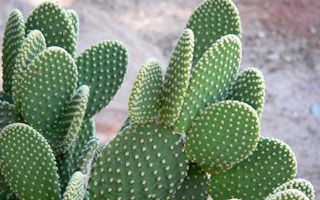Scientists in Beijing have recently discovered that minute conical copper spikes can separate tiny oil droplets from contaminated water.
To continue reading, subscribe to Eco‑Business.
There's something for everyone. We offer a range of subscription plans.
- Access our stories and receive our Insights Weekly newsletter with the free EB Member plan.
- Unlock unlimited access to our content and archive with EB Circle.
- Publish your content with EB Premium.
Their breakthrough study, published in the online journal Nature Communications, is inspired by cactus spines and how the prickly plant collects similar sized water droplets on its conical needles.
According to the researchers, most existing separation methods have a difficulty of extracting micron-scale oil particles. Tiny droplets are left out in the usual, large-scale phase separation method since there is no separation ability or there are inadequacies in the throughput capacity, meaning the amount of oil that can be separated in a given amount of time under varying situational conditions.
This hinders environmental protection agencies and the petroleum industry, both of which need effective separation processes, wrote the group.
In a published commentary last Friday, Greenpeace political adviser Zelda Soriano detailed three recent petrochemical spills affecting the waters of Thailand, Indonesia and the Philippines. She said, “These three oil spill incidents demonstrate that the transportation of fossil fuels is a high-risk activity, posing enormous dangers not just to the environment but also to communities and their way of life.”
Southeast Asia is home to the Coral Triangle, she noted. This is an area in the western Pacific Ocean that includes portions of Indonesia, the Philippines, and Malaysia, and it has a rich marine biodiversity. It is imperative that oceans must be protected, especially from pollution caused by ‘dirty petrochemical fossil fuels,’ Soriano stated.
The copper-spiked array could be beneficial in this regard, since the scientists said its structure provides “obvious advantages in micron-sized oil collection with high continuity and high throughput.”
During their research, they observed that needles of the cactus commonly called ‘Bunny ears’, or Optunia microdasys, can, in fact, obtain water from air. Droplets gathered at the tips and combined as it travelled to the base. This is all due to the shape of the conical spines and the surface tension of the water droplets, they explained to the BBC in an interview.
Finding this, the Chinese researchers from different universities mimicked the cactus, devising a thin sheet of conical needle structures made from copper and a silicone polymer that are half a millimetre long. Through their experiments, they learned that hexagonal arrays work best, separating almost 99 per cent of the highly mixed tiny droplets of oil and water. They also discovered that rougher needles are more effective at dividing the two liquids.
In their report, they outlined the collection device, illustrating how the oil-water mixture flows on the array of needles with the oil obtained and collected on one end and the clean water on another.
With this discovery, the researchers from Beijing plan to scale up the device and conduct field tests.










